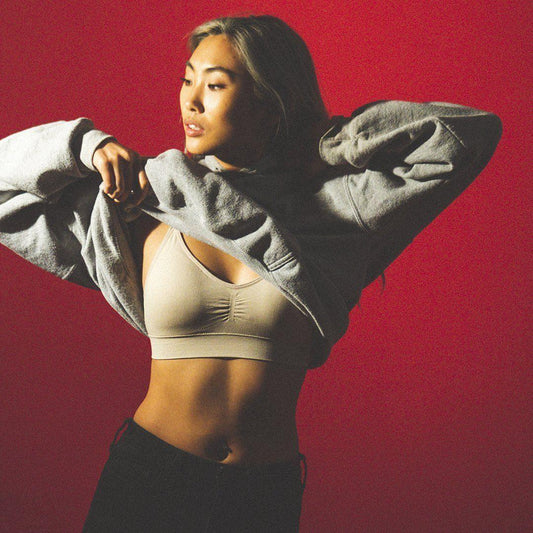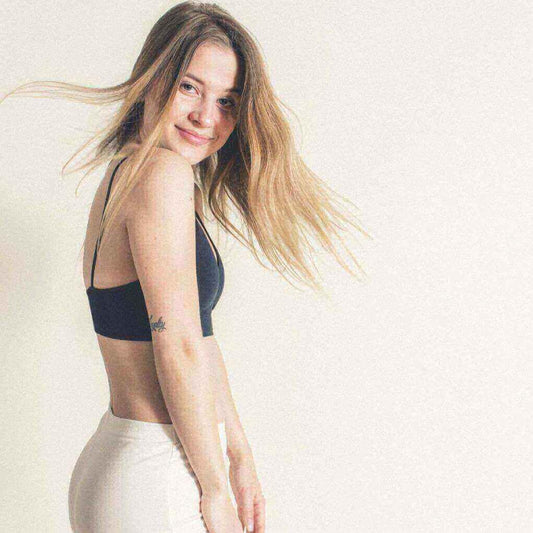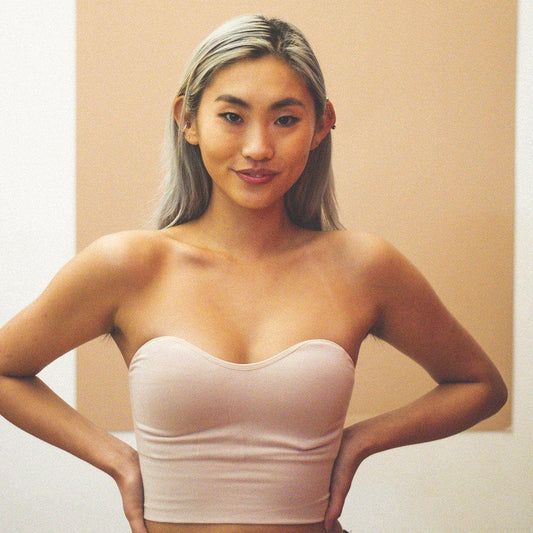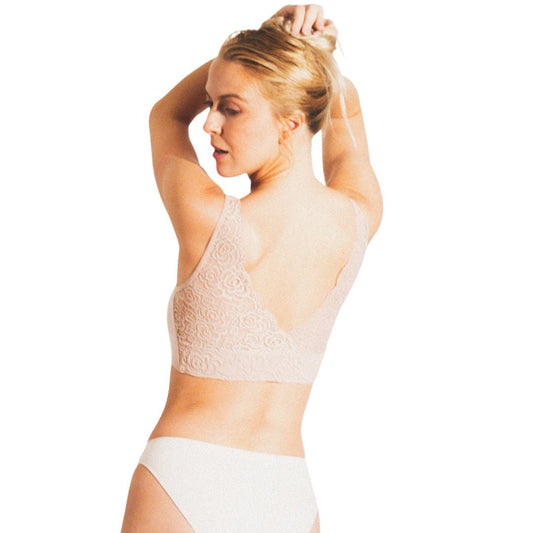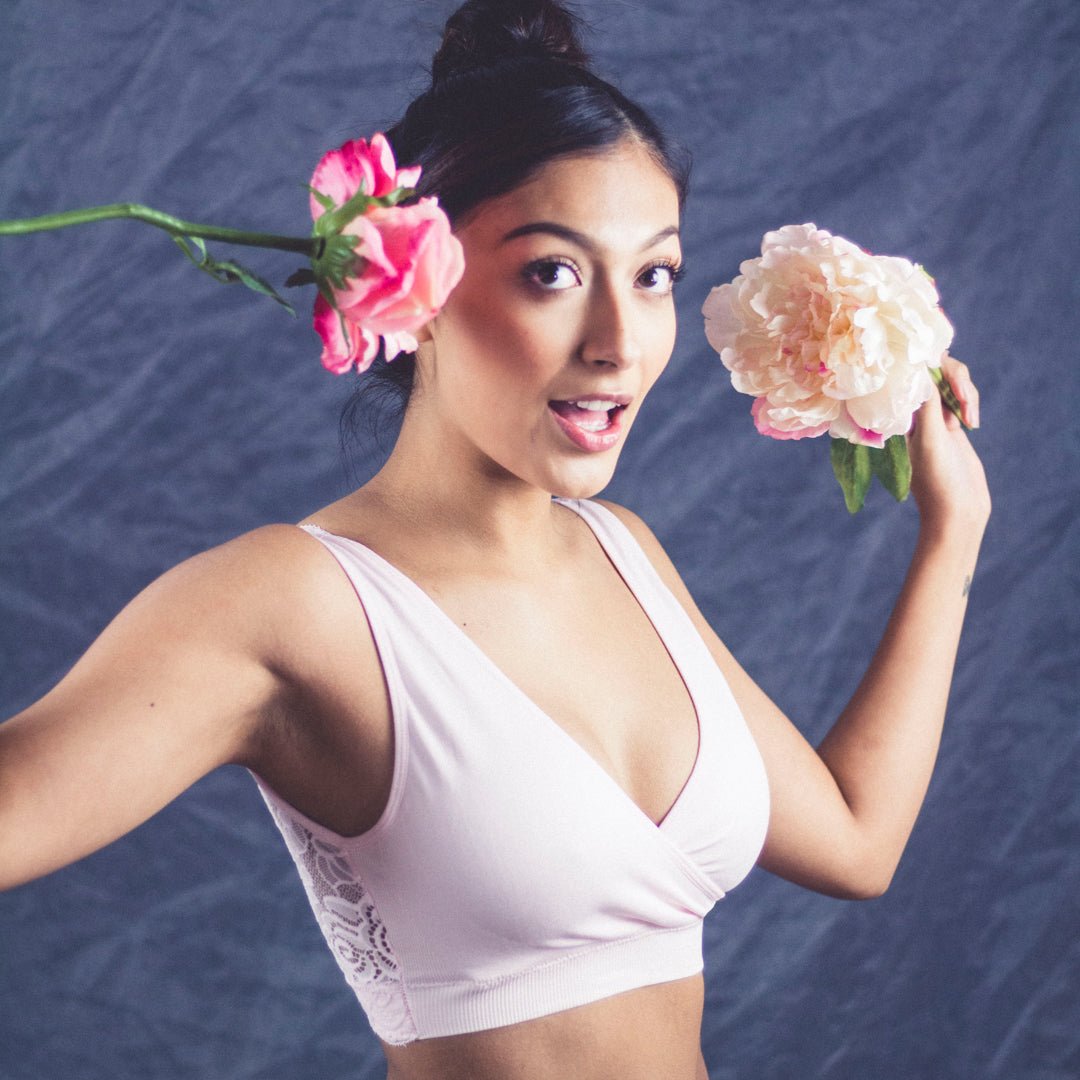
To truly understand the gravity of BRABAR’s mission, it's important to note how we came to be where we are today.
To truly understand the gravity of BRABAR's mission, it's important to note how we came to be where we are today. I mean, history repeats itself, right… or should we call this her-story. Reporting today for a little history lesson on where these metal contraptions that we call "essentials" came from in the first place.
The bra industry has been heavily intertwined with social patterns and female status throughout history, including views on women's rights and body exposure.
Throwing it back to the 14th century, some of the first women can be seen wearing "breast bags"; unlike the name, it was more like a bandage of fabric to hold the girls up while playing sports. I mean, I can't blame them. Would you want to run with watermelons flying at your face?
That was pretty much the only notable breast coverage until the creation of the corset in the 16th century. The original corsets had a piece of wood inserted into them, slimming the body to an hourglass shape and pushing the breasts up. The word corset is French and means "a pair of bodies," as the boobs now come in two separate pieces. It looks like they are starting to get somewhere. After being chained to the corset, the first bearings of the Bra were born. Two parallel movements drove the death of the traditional suffocating corset. The first was that doctors started getting more informed on the dangerous impairments of corset boning on the female body. This is also when we see some of the first feminists (woot woot) who saw that to be active members of society, they needed full-range mobility, and having your boobs chained to your body doesn't do that for you too well.
1n 1889, the first bra was seen in a French edition of Life magazine. It was as if someone had taken a pair of scissors to their corset, and the two pieces were sold separately. Of course, the top part was the basis for the first Bra, and by 1905 was sold on its own. Then quickly, in two years, vogue coined the term "brasserie" for the top part of the corset top. There is truly nothing you can't do with a bit of creativity and a pair of scissors.
The real change started in 1914 with the start of world war I. The corsets, and now bras, people were wearing contained metal needed for the war efforts, so they essentially told women to free the nipple so they could free the country. At the same time, significant health efforts were being made, and doctors advised people to stop wearing corsets ailments, and injuries. But actual change came during the primping for a debutante ball when a 19-year-old socialite was wearing the typically stuffed corset, and her "boxlike armor of whalebone" poked through her sheer gown. Mary had a large chest and needed a more comfortable fit than the whalebone provided. "Bring me two of my pocket handkerchiefs and some pink ribbon," and with those words, she sewed the first Bra as we know it. When she entered the party, it was as if she had invented sliced bread, and girls of all ages lined up with orders. Her new invention had become so popular that upon being asked to sell one, she established the "backless bra," her creation was lightweight, soft, comfortable, and naturally separated the breasts.
Bras soon became the new wave, quickly replacing their more uncomfortable cousin. They first began as a one size fits all material, similar to a bandeau sported with flapper attire. It looked a lot like the first Bra I wore at camp, so they were onto something. Unfortunately, they were not as progressive yet, so many girls with larger chests still used corsets lace-up products underneath… no thank you. Thankfully with the invention of the cup system in the late '20s, there was hope!
With a rise in slang in the 1930s, Brassiere then shortened to Bra, and they started introducing features like adjustable straps and padded cups. The modern Bra was in the making. With the 1950s came New materials, fabrics, colors, patterns, styles, padding, and elasticity, and with the influence of Hollywood, the popularity of bras like the cone-shaped, spiral-stitched bullet bra was all the rage. Oh, and you can thank the fifties for creating girls training bras for young girls. Otherwise, we might all be wearing camisoles. No, thank you.
The sixties and seventies came with much innovation as Frederick Mellinger, another Hollywood designer, created the first front hook bra, front hook bra, and the almost too well-known push-up Bra. Three boss women, and childhood friends, designed the Jogbra from their distress with their bra selection - a cute name if you ask me, and I love a female entrepreneurial moment. It was the first sports bra made of two jock straps sewn together. By the eighties, fashion led the way that bras looked and felt. Many popular shows, models, and celebrities all wore fashionable and extravagant bras and, unlike before, wanted them to be seen rather than covered up.
Today close to 95% of women in Western countries wear bras with many different brands to choose from, all leading to a multi-billion dollar industry.
Well, that's where our mission comes in. We read the history, but unlike your history teacher, we didn't leave it in the books. We wanted to create a wire-free bra promoting body-positive values and endorsing an educational perspective on the bra industry. To show women that no bra can be a shackle to your confidence because you shine from within. But it's not just about us, what do you think?
The Origin of BRABAR: Redefining Comfort and Confidence for Young Women
BRABAR was founded with a clear mission: to transform the bra shopping experience for teenage girls and young women. The idea began when the founder recognized a significant gap in the market for age-appropriate, comfortable, and supportive bras that catered specifically to the needs of young women. This realization sparked the journey of creating a brand that not only focuses on fit but also on boosting confidence and promoting body positivity.
Understanding the Need
Teenagers and young women often struggle to find bras that fit well, are comfortable, and make them feel confident. Traditional bras, often designed for older women, can be uncomfortable and ill-fitting for developing bodies. Recognizing this challenge, BRABAR set out to create a range of bras that cater specifically to the unique needs of younger demographics.
The BRABAR Solution
BRABAR offers a diverse collection of wireless bras, bralettes, and sports bras that prioritize comfort without compromising on style. The brand's commitment to providing the perfect fit is evident in their Fit Guide, which offers detailed instructions on how to measure band and bust sizes accurately at home. This ensures that every young woman can find her ideal size, promoting both comfort and confidence.
Key Product Offerings
-
Soft Bra Collection: The Soft Bra Collection features a variety of comfortable, wire-free bras designed for everyday wear. These bras are perfect for young women who need support without the discomfort of underwires.
-
Everyday Bras: The Everyday Bras range includes back closure wire-free t-shirt bras that offer seamless support and comfort throughout the day.
-
Hug Bralettes: For those who prefer bralettes, the Hug Bralettes collection provides options that are both stylish and supportive, catering to both petite and full-busted girls.
-
Starter Kit: BRABAR's Starter Kit is designed for those new to wearing bras, ensuring a comfortable and proper fit from the start.
Empowering Young Women
BRABAR is more than just a bra brand; it is a movement aimed at empowering young women by promoting body positivity and confidence. The brand understands the importance of fit and how it impacts self-esteem, which is why they have put extensive effort into ensuring that their products meet the highest standards of comfort and support.
Educational Resources
The brand also offers educational resources like the Ultimate Guide to Teenage Bras, which provides valuable information on finding the right bra as a teenager. This guide helps young girls navigate the often overwhelming process of selecting their first bras, making the experience less daunting and more empowering.
Commitment to Sustainability
In addition to focusing on fit and comfort, BRABAR is committed to sustainability. Their products are designed with eco-friendly materials and processes, ensuring that young women can feel good about their choices. This commitment to ethical practices further distinguishes BRABAR in the lingerie market.
Conclusion
BRABAR began with a mission to fill a gap in the market for comfortable, supportive, and stylish bras for teenage girls and young women. By prioritizing fit, comfort, and body positivity, BRABAR has created a brand that not only meets the physical needs of its customers but also supports their emotional and psychological well-being. With collections like the Soft Bra Collection, Everyday Bras, and Hug Bralettes, along with educational resources and a commitment to sustainability, BRABAR continues to redefine the bra shopping experience for young women around the world.

